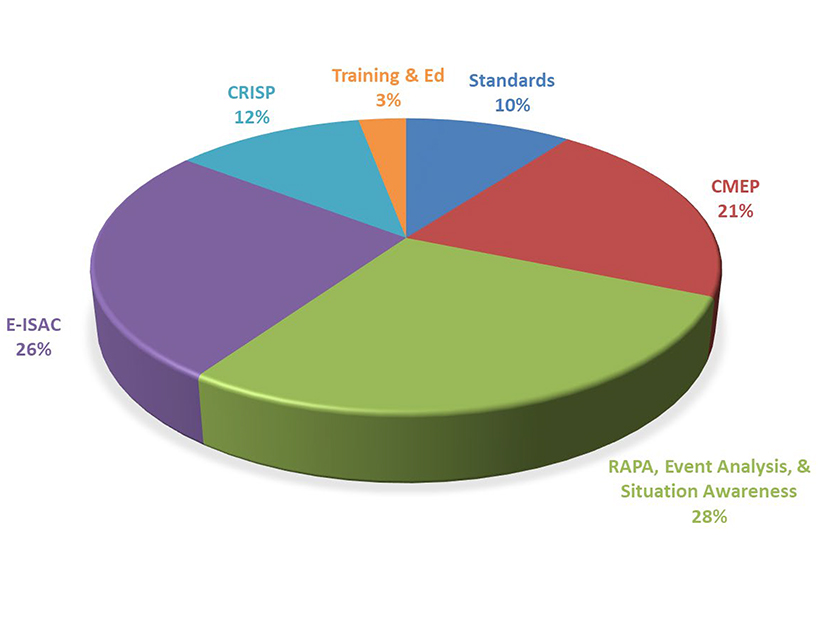NERC’s draft 2023 business plan and budget shows the organization’s expenses are set to rise by more than 13% in 2023, fueled by increasing headcount, a return to in-person meetings and operating expenses that include the biannual GridEx security exercise and growing technology costs.
The ERO posted its draft budget Wednesday, along with those of the regional entities. The organization is accepting comments on the drafts through June 24, with the goal of submitting the final budgets to its Board of Trustees for approval at its next open meeting in August.

All of the RE budgets are slated to grow next year as well, with the Midwest Reliability Organization increasing the most, at 15.2%, and the Texas Reliability Entity rising the least, at 3.3%. The overall ERO Enterprise budget is expected to be $248.9 million, about $22.7 million more than the budget for 2022. Assessments are also planned to rise across most of the enterprise, with the total for NERC and the REs growing by $14.2 million to $214.6 million; the sole exception is WECC, where the assessment is set to fall 17.2% to $20.7 million.
New Employees, GridEx Biggest Cost Drivers
NERC’s $100.8 million proposed budget, up from $88.8 million last year, represents the biggest increase since 2015, when the inception of the Cybersecurity Risk Information Sharing Program drove that year’s budget to grow from $56.4 million to $67.2 million, a rise of 18.3%. It is also more than double the average annual budget increase of 5.7% for the last 10 years.
The biggest line item in the 2023 budget is personnel, which is set to rise 11.6% to $58 million. In part this is because of NERC’s expectation of hiring 14 new full-time employees next year, part of its overall plan to add 37 employees by 2025. The new hires are expected to be concentrated in the information technology sector, reflecting NERC’s belief that cybersecurity is one of the top risks facing the North American bulk power system, as reflected in last year’s ERO Reliability Risk Priorities Report. (See Grid Transformation, Cybersecurity Lead 2021 ERO Risk Report.)
Another component of the increase in personnel costs is the planned merit-based pay increases that will average 5.5 to 6% over the next three years because of “inflationary pressures and increased demand for cybersecurity and IT talent.” The draft budget emphasized that this is only an estimate based on “market supply and demand,” but NERC is planning to conduct a market compensation study before the 2023 review cycle to help determine the appropriate amounts for raises.
The next biggest budget segment is operating expenses, which is set to rise 17.7% to $35.7 million. The biggest contributor to this increase is the Electricity Information Sharing and Analysis Center, which will see its budget rise from $32.8 million to $37.7 million. This is primarily because of GridEx, which is held every other year and thus will not see any expenses in 2022.
The budget for meetings and travel is increasing as well, as NERC continues to anticipate a limited return to in-person meetings that were sidelined for the last two years during the COVID-19 pandemic. The board was to have held its first face-to-face meeting since 2020 this month in Virginia, but it switched to virtual sessions after an attendee tested positive for the coronavirus at the meeting site; the August meeting is still expected to be held in person in Vancouver, Canada. (See NERC Board of Trustees/MRC Briefs: May 11-12, 2022.)
These increases are expected to be slightly offset by lower spending on rent for NERC’s Atlanta office, thanks to “lease concessions” that the organization negotiated after plans to relocate the headquarters this year fell through. (See NERC Shelves 2022 Atlanta Relocation Plans.) NERC said it expects to save about $300,000 on rent for the current office per year through 2025, when it may revisit the moving plans.



